Introduction:
Printed circuit boards come in many forms, shapes and sizes. PCBs can be distinguished on the basis of frequency, on the basis of material used, or on the basis of the number of layers used.
Rigid, Flex?and Rigid-Flex are commonly known types of PCBs. Rigid PCBs are the ones you are more likely to come across whereas Flex and Rigid-Flex are the rarer variants but there are a few qualified manufacturers who can manufacture them for you.

Image Courtesy: PCBgogo
PCBgogo is providing Flex and Rigid-Flex PCBs as a part of their PCB manufacturing capabilities. Here we will discuss what Flex and Rigid-Flex PCBs are, how they differ, their applications, some basic rules you should keep in mind when designing your PCB.
What are Flex and Rigid-Flex PCBs?
Flexible PCBs as the name suggests offer more flexibility and that is why they are specifically designed to fit into electronic devices/products as opposed to building devices around the circuit board. They are also used as connectors for electronic devices and as individual circuits.
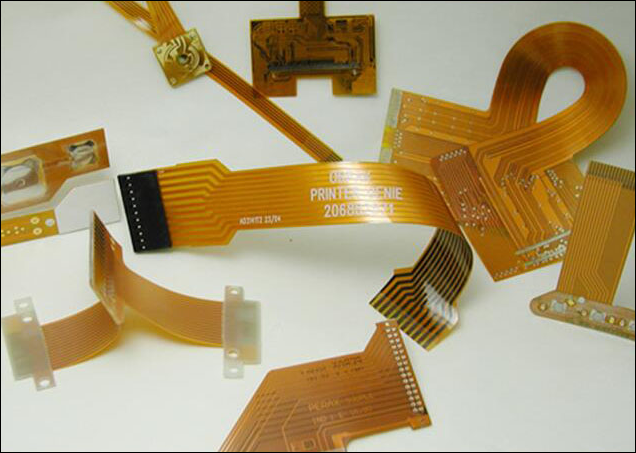
Image Courtesy: PCBgogo
As for Rigid-Flex PCBs, they are a hybrid between rigid and flexible printed circuit boards and integrate elements from both. The flex part of the PCB penetrates the rigid sections of the PCB. The flexible part of the PCB may not always be laminated permanently, it could also be connected to the PCB through a connector.
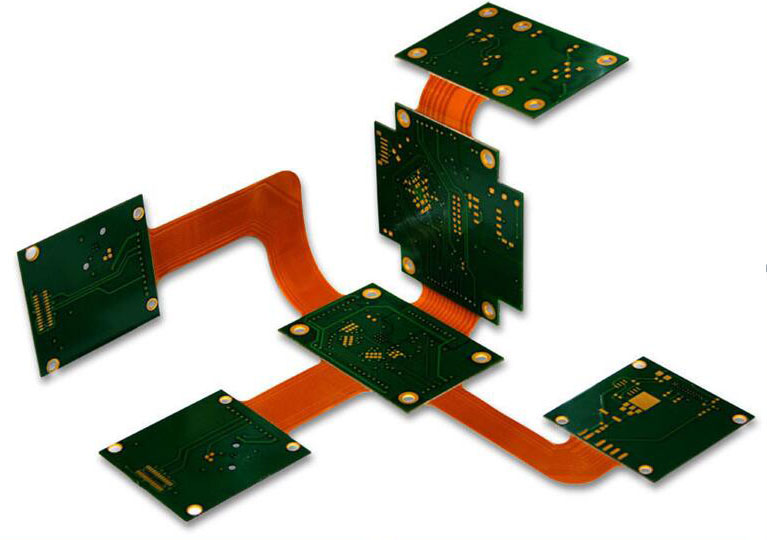
Image Courtesy: PCBgogo
If you choose to go for the rigid-flex PCB then you have to decide which layer should be the flexible one in your design stack-up. Your stack-up design is basically the consequent layers of copper and insulating material in your PCB. It is usually advised to keep your middle layer as the flex layer but you can choose whichever if required. Also, keep in mind that flex and rigid-flex PCBs can also have multiple layers just like rigid PCBs.

Image Courtesy: PCBgogo : Single sided Flex PCB

Image Courtesy: PCBgogo : Double sided Flex PCB
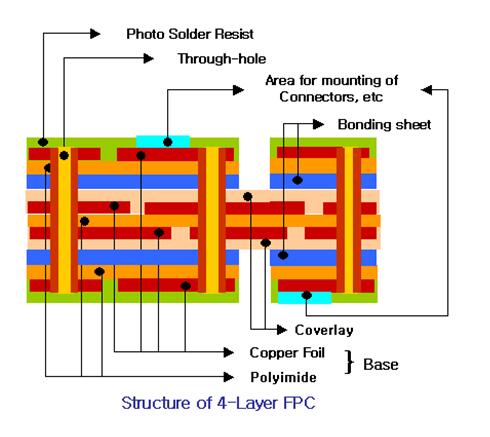
Image Courtesy: PCBgogo : Multiple layer Flex PCB
Why are Flex/Rigid-Flex PCBs costly?
Flex PCBs are more costly. Why? you ask, well they are more complex to build and require more material and dedicated processes. The flex PCB manufacturing process will include the rigid PCB manufacturing process steps along with additional steps. To compare, rigid PCBs require an 8-step manufacturing process whereas flex PCBs require a 17-step manufacturing process. They will also require additional materials as compared to rigid PCBs.
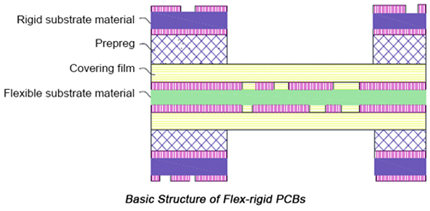
Image Courtesy: PCBgogo
Applications of Flex PCBs
Rigid-flex and Flex PCBs have a wide range of applications owing to their advantageous ability to bend and fold into a compact space when required. This is precisely why flex PCBs are preferred when it comes to smart devices and medical devices which can also be considered one of the most important applications of flex PCBs. They are used not only in a variety of electronic products but also in high-end control systems as they can not only reduce the weight of equipment but also reduce their size.
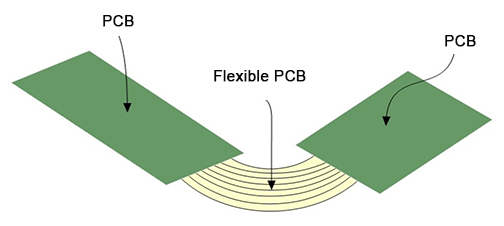
Image Courtesy: PCBgogo
For example, if we discuss the use of flex PCBs as connectors, they could prove to be much more cost-effective as opposed to rigid PCBs connecting with wires. This is because usually connecting 2 PCBs requires the manufacture of an additional cable/connector which adds to the time and cost of assembly.
Some Basic Rules for Flex PCB Designing
Here are some basic rules of thumb you should keep in mind when designing flex and rigid-flex PCBs.
§ Gradual Change in Copper Trace Width
Usually, you would use thinner copper traces to allow for lesser resistance and consequently more flexibility. Similarly, you would use wider endings at the edges to allow for soldering. But sharply turning from thin copper traces to wider ones immediately after will create weak points in your PCB. Instead, you should go for a gradual change from thin traces to wider traces at the ends.

Image Courtesy: PCBgogo
§ Top and Bottom Copper Traces Offset In Design
Instead of creating the top and bottom copper traces in a PCB directly imposed onto each other, create an offset between the traces so they are not directly on top of each other. This will reduce the chances of your traces cracking and also improve the mechanical performance of your PCB.
§ Cover Pads With Soldermask/Coverlay
Another tip is that you should make your pads stronger by covering parts of the pad with a solder mask/coverlay. This is particularly recommended if you’re designing a single-side PCB with non-plated through holes.
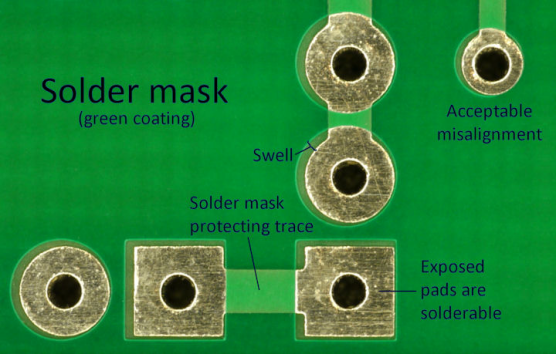
Image Courtesy: PCBgogo
§ Use Hatched Polygon Pours
Polygon pours (also known as copper pours) are used to create a solid or hatched area on a PCB layer, they are essentially used to fill in irregularly chapped areas of a PCB. When applicable, try to use hatched polygon pours instead of solid ones as solid copper will make your PCB less flexible.
§ Create Rounded Corners
Wherever your PCB will be bent try to round out the corners instead of using 90-degree square corners. This will reduce the chances of tear and resistance in flexibility.
PCBGOGO: Offering Flex and Rigid Flex PCB Manufacturing
Established in 2017 in Shenzhen, China, PCBgogo has established quite a foothold in the PCB manufacturing industry. PCBgogo offers PCB manufacturing and assembly services worldwide. It is RoHS and ISO 9001:2015 certified and claims to cater to over 100,000 clients worldwide and has delivered over $50 M worth of electronic components.

They are offering low cost and affordable Flex and Rigid-Flex PCB manufacturing. You can order a complete customized quote?from their website directly. You can also contact them at service@pcbgogo.com to get the perfect PCB fabricated for your projects.
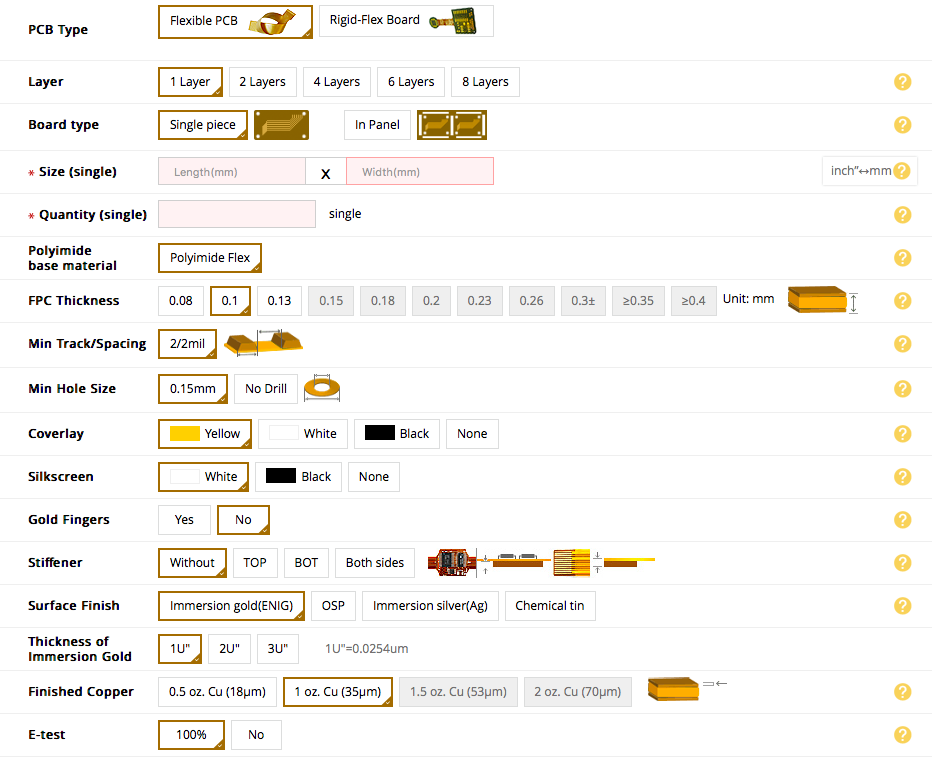
This article is originally published on electronicslovers.com and authorized to reprint on PCBgogo.
The original link: https://www.electronicslovers.com/2021/02/flex-and-rigid-flex-pcbs-pcbgogos-pcb-manufacturing-capabilities.html
